Dust explosions are serious hazard in many industrial environments, particularly those involving handling of powders, grains, chemicals, and other fine combustible materials. Unlike gas or liquid explosions, dust explosions can occur in materials that are not normally considered explosive in solid form but become explosively reactive when dispersed in air as fine particles. To understand the mechanism behind these incidents, the concept of the Dust Pentagon is very important for HSE professional.
Contents
What Is Dust Explosion?
Dust explosion occurs when fine combustible dust is suspended in the air in confined/enclosure space and ignited. The explosion can happen instantly and with devastating force, leading to fires, structural damage, injuries, or even fatalities.
While fire triangle (fuel, heat, and oxygen) is enough to start a fire, dust explosions require two additional elements. These five elements together form the Dust Pentagon, which describes the conditions necessary for a dust explosion to occur.
The Dust Pentagon: Five Key Elements
- Combustible Dust
This is the fuel for the explosion. Many materials—even metals, wood, sugar, flour, grain, coal, rubber, and plastics—can become explosive when ground into fine dust and dispersed in air. - Ignition Source (Heat)
A spark, flame, hot surface, friction, static electricity, or even heat from mechanical equipment can serve as an ignition source. The ignition temperature for dust is often lower than in its bulk form. - Oxygen (Air)
As with any fire or explosion, oxygen is needed to sustain combustion. The atmosphere naturally contains around 21% oxygen, which is usually sufficient for a dust explosion. - Dispersion
The dust must be suspended in the air at a sufficient concentration to create a combustible cloud. This condition often occurs during material transfer, grinding, or cleaning operations. - Confinement
When the dust cloud is confined within space such as a silo, duct, room, or enclosure, the pressure from the combustion cannot escape. This builds up pressure rapidly and results in a violent explosion.
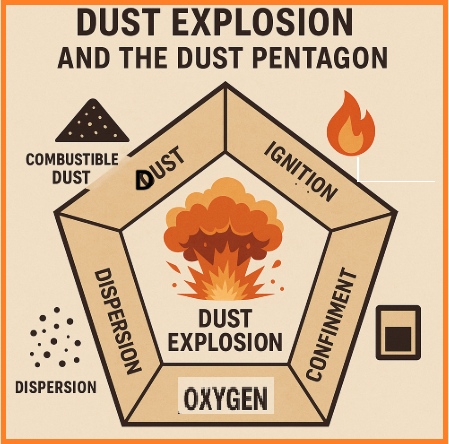
Primary and Secondary Explosions
- A primary explosion is the initial ignition of a dust cloud.
- This is often followed by a secondary explosion, which can be more destructive. The first explosion disturbs accumulated dust on surfaces, lofting it into the air and creating a second dust cloud that ignites moments later.
Prevention and Control Measures
To prevent dust explosions, industries must focus on removing at least one element of the Dust Pentagon:
- Housekeeping: Prevent dust accumulation on surfaces.
- Ventilation and Dust Collection Systems: Control dispersion and confinement.
- Equipment Maintenance: Prevent ignition sources like overheating or friction.
- Inerting and Suppression Systems: Reduce oxygen concentration or suppress ignition.
- Explosion Venting and Isolation: Limit the damage if an explosion does occur.
It highlights that not just fire hazards, but a combination of conditions can create explosive scenarios. With proper safety practices, risk assessments, and preventive controls, industries can protect workers, infrastructure, and operations from this often-underestimated hazard.


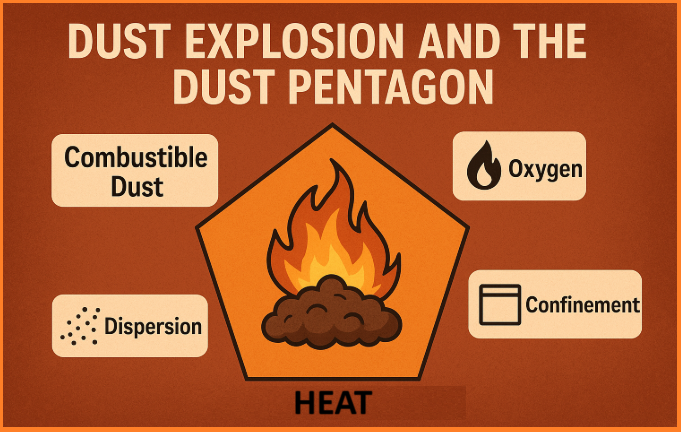
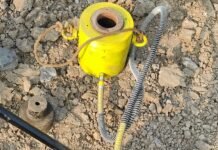
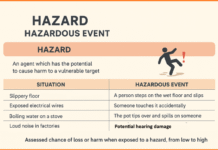
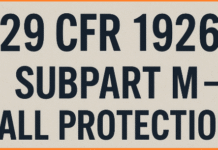
The dust cloud shall form an explosive mixture to get ignited by a spark and explosion
Very useful tips for safety professionals. Excellent! Thank you foe sharing,